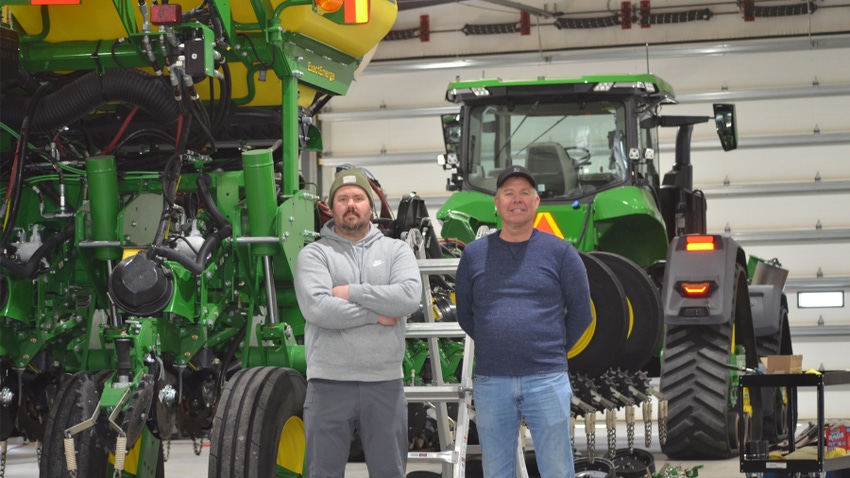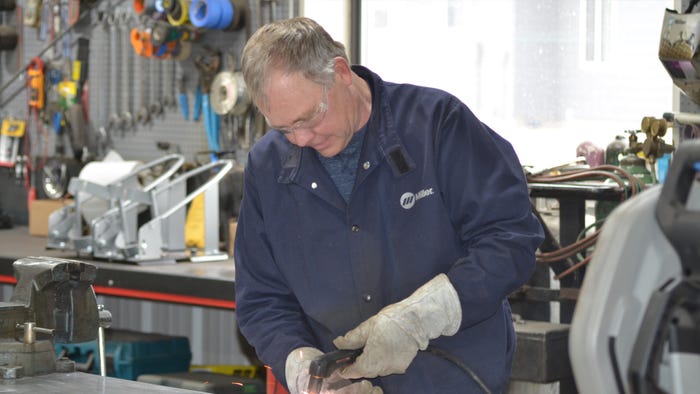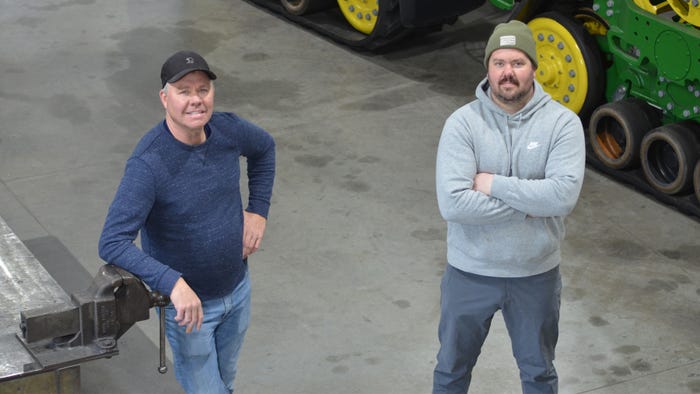
Farm shops come in all shapes and sizes, ranging from gigantic, modern shops to a concrete slab poured out in the corner of a dirt-floor machine shed. No matter the shop, practicality and function are the primary concerns of farmers.
Rick Christiansen and his son, Brandon, who farm near Plainview, Neb., built their farm shop a decade ago, but they put plenty of planning, research and thought into the construction of their new shop at that time. That’s why the shop today continues to be a model of function, with that pre-construction planning paying off in the long run.
Goals in mind
The 120-by-72-foot metal shop replaced their old 40-by-40-foot shop when it was built in the spring of 2013. For Rick, the shop welding and fabricating area was crucial, because he enjoys manufacturing and reinforcing his farm equipment and building his own versions of useful tools and innovations. When they built their shop, Rick and Brandon had a few important goals in mind.
They needed a bay that was large enough to bring in their semitruck and trailer for cleaning and maintenance. “We made the wash bay 80 feet by 20 feet, so we could pull the trucks into the bay and have plenty of room,” Rick says. “I looked at several shops, did my research and got a lot of ideas.”
One of the greatest priorities was to build a shop where everything had its place up and off the floor.
“I did not like things sitting on the floor,” Rick explains. “That’s why we built plenty of shelves, so we could get tools, equipment and supplies up off the floor.”
Shop features
Here are just of few of the unique innovations Rick and Brandon enjoy in their farm shop:
Nothing overhead. Before they poured the concrete floors to the shop, they placed electrical and air lines underneath the floor, so nothing would run overhead. They also poured a thicker flooring — 9 inches — so when they bring the combine, tractors and sprayer into the shop for maintenance, there are no issues with concrete cracking over time.

BUILDING IT RIGHT: Rick Christiansen takes pride in the fabrication and welding area of the shop, where he builds new shelving, work benches and other amenities for the shop. He also fabricates needed tools and equipment for the farm.
Radiant heat. Deciding how to heat your shop is a big decision. After researching the topic, Rick and Brandon settled on radiant heat up high along the sides of the shop. “We thought about floor heating at first,” Rick says. “But we decided on radiant heat on the sides. It is quiet, and the recovery time is just 10 minutes.”
Brandon says that it is surprising how fast the shop heats back up after having the doors open in the winter. Radiant heat has been an important component in functionality for their shop, he adds.
Easy access. Everything in their shop is set up for easy access and convenience. The plasma cutter is off the ground and mounted on a movable arm that can be shifted outward toward machinery they are working on. Electrical cords and air lines are on reels on all sides of the shop. “Everything is convenient, no matter where you are working,” Rick says. “There are plenty of shelves, and some of them are crude, but they work.” Even power washers are stored on racks off the floor to allow for easier access.
Big bay. The wash bay in the shop is 80 feet by 20 feet to accommodate a truck and trailer. The main portion of the shop is large enough to work on all of their implements. “After a while, it seems like it still isn’t big enough,” Rick adds, “but it works just fine for us.” LED lighting keeps the shop area bright and makes it easier to work in.

OFF THE FLOOR: Rick and Brandon Christiansen do not want equipment or shop tools on the floor of their shop. They have built numerous innovations, including shelving, to boost power washers and other equipment off the floor. They run electrical cords and air lines on reels that are easily accessible from every corner of the shop.
Service pit. “The service pit is 24 feet long,” Brandon says. “It was designed heavy enough so you can drive any of the implements over it.” A 25-foot door opens to the service bay. Tools, oil filters and grease are stored on shelves along one side of the bay. There is a 600-gallon waste oil tank underneath the pit. Benches near the bay were all built by Rick.
“When I first got started, I couldn’t afford a lot of iron, so I cut up old water-drive Valley Irrigation systems and built work benches out of them,” Rick recalls.
Fabrication area. This is the heart and center of the shop for Rick. He has become a master welder, skilled in fabrication. He enjoys working on farm implements, but also building racks, shelving and other necessities for the shop himself. His work area includes a mobile work bench, complete with wrenches, sockets and vices that can be moved to anywhere in the shop. Rick designed a metal rack that holds long pieces or iron on the front side and smaller lengths on the back.
Off the floor. Along with their goal of getting tools and equipment off the floor, they have an upstairs bay along one side of the shop above the office where tools and other parts are stored. They even have a lift to service vehicles and smaller equipment easily.
Office time. Brandon says that over time he would like to expand their modest office space, but the office they have now off the shop is adequate — complete with everything they need — including a restroom.

STILL FUNCTIONING: Although their shop was built a decade ago, Rick and Brandon’s long-term planning has paid off in a farm shop that continues to work well for their operation.
While their farm shop is not new, Rick and Brandon both say that the research and time they put into planning their shop ahead of time — thinking not only about their needs at the time, but also what their needs might be down the road — was time well spent. That’s the reason their decade-old shop is still as functional today as the time when it was built.
Read more about:
Farm ShopAbout the Author(s)
You May Also Like






